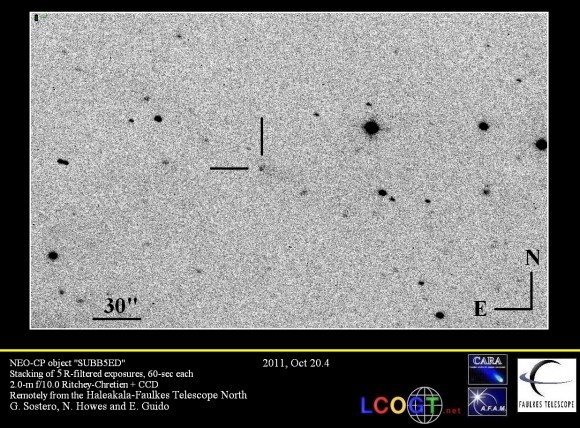
© Universe Today
Based on an observation posted on the Near Earth Object confirmation page from an image taken by A. D. Grauer using the mount Lemmon observatory, Faulkes telescope team members Nick Howes, Giovanni Sostero and Ernesto Guido along with University of Glamorgan student Antos Kasprzyk and amateur astronomer Iain Melville, imaged what is potentially some of the first direct evidence for a Trojan Jupiter Comet.
Comet P/2010 TO20 (LINEAR-GRAUER) was immediately recognised by the team from looking at the orbit to be a highly unusual object, but it was only when the images came through from the Faulkes observations that the true nature of the object became clear.
The observations showed a distinct cometary appearance, with a sharp central condensation, compact coma and a wide, fan-shaped tail.
This is no ordinary comet, and supports the theory and initial spectral observation work by a team using the keck telescope in Hawaii. Closer analysis of their object (part of a binary known as the Patroclus pair) showed that it was made of water ice and a thin layer of dust, but at the time of writing, no direct images of a Jupiter Trojan showing evidence of a coma and tail had been taken.
The Faulkes teams above image, combined with the original observations by Grauer clearly show a cometary object, thus confirming the Keck team's hypothesis.
